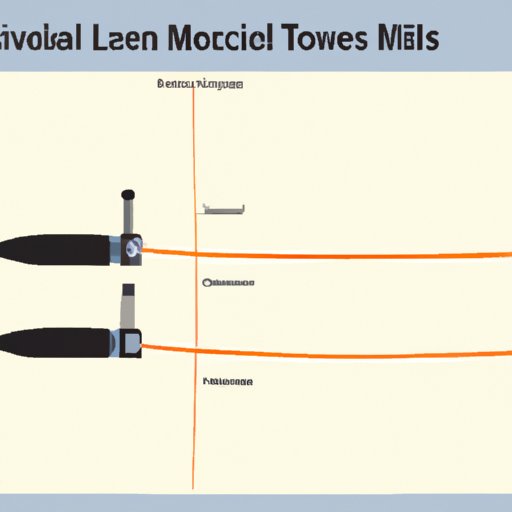Introduction
In today’s world, missiles have become an integral part of modern warfare. From intercontinental ballistic missiles (ICBMs) to cruise missiles, they are used to deliver payloads over long distances with great accuracy and destructive power. But how fast do missiles travel? What is the physics behind their speed and velocity? And what factors impact their speed? This article will explore these questions in-depth in order to provide readers with a comprehensive understanding of missile speed and velocity.

Exploring the Physics Behind Missile Speed and Velocity
In order to understand how fast do missiles travel, we must first examine the physics behind missile speed and velocity. At its core, missile speed is governed by Newton’s laws of motion. According to the first law, an object in motion will remain in motion unless acted upon by an external force. The second law states that the acceleration of an object is equal to the sum of all forces acting on it divided by its mass. Finally, the third law states that for every action, there is an equal and opposite reaction.
These three laws of motion together determine the speed of a missile. When a missile is launched, it is subjected to several types of forces, such as thrust, gravity, drag, and lift. Thrust is the force generated by the engine which propels the missile forward. Gravity is the force of attraction between two objects, such as the Earth’s pull on a missile. Drag is the air resistance that slows down a missile as it moves through the atmosphere. Finally, lift is the force generated by air pressure on the wings of a missile.
The speed of a missile can be calculated using the equation v = u + at, where v is the final velocity, u is the initial velocity, a is the acceleration, and t is the time. In order to calculate the acceleration, we must use the equation a = F/m, where F is the sum of all forces acting on the missile and m is the mass of the missile. By combining these two equations, we can calculate the speed of a missile given its mass, initial velocity, and the sum of all forces acting on it.

Examining the Factors Impacting Missile Speed
Now that we understand the physics behind missile speed, let’s take a look at the factors that impact it. The most important factor is the design of the missile. Different types of missiles have different designs which can drastically alter their speed. For example, ICBMs are designed to travel at very high speeds, while cruise missiles are designed to fly at lower altitudes and slower speeds.
The weight of the payload also plays an important role in determining missile speed. Heavier payloads require more energy to propel them, resulting in slower speeds. Additionally, wind resistance can slow down a missile, as the air passing over the wings creates drag which reduces the missile’s speed. Finally, the launch angle can also impact missile speed. If the missile is launched at too low of an angle, it will quickly lose speed due to gravity.
A Comparison of Missile Speeds Across Different Types of Missiles
Now that we understand the factors impacting missile speed, let’s take a look at the speeds of different types of missiles. Intercontinental ballistic missiles (ICBMs) are designed to travel at extremely high speeds, reaching up to 15,000 mph. Cruise missiles are much slower, typically traveling at speeds between 500 and 1,500 mph. Anti-ship missiles have the slowest speed, typically traveling at around 400 mph.

A Look at Missile Defense Strategies and How They Impact Missile Speed
Finally, let’s take a look at how missile defense strategies can impact missile speed. Missile defense systems rely on interceptors, lasers, and kinetic kill vehicles (KKVs) to stop incoming missiles. Interceptors are rockets that are launched to intercept and destroy incoming missiles. Lasers are powerful beams of light that can be used to disable missiles. KKVs are small, unmanned vehicles that can be used to physically collide with incoming missiles and destroy them.
These defense strategies can have an impact on the speed of incoming missiles. For example, if an interceptor is launched to intercept an incoming missile, the missile will have to adjust its speed to avoid being destroyed. Similarly, if a laser is used to disable a missile, the missile’s speed will be impacted as it adjusts to the new conditions. Finally, if a KKV is used to collide with an incoming missile, the missile’s speed will be drastically reduced as it collides with the KKV.
Conclusion
In conclusion, this article has explored the physics behind missile speed and velocity and examined the factors impacting missile speed. We have also compared the speeds of different types of missiles, and taken a look at how missile defense strategies can impact missile speed. It is clear that there are many complex factors that play a role in determining the speed of missiles, and this has implications for future missile speed research.
(Note: Is this article not meeting your expectations? Do you have knowledge or insights to share? Unlock new opportunities and expand your reach by joining our authors team. Click Registration to join us and share your expertise with our readers.)
